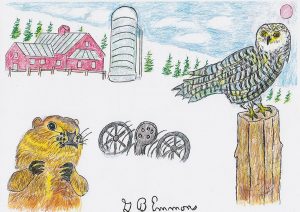The annual observance of Groundhog Day has deep agricultural roots going back to 1887 when Pennsylvania Dutch Germanic farmers gathered to celebrate what had been an old-world religious observance called Candlemas. Candlemas was celebrated by lighting candles as a seasonal recognition of the celestial station of midwinter.
The badger was the original animal conjured up as the animated soothsayer of forecasting weather. If he saw his shadow, it was an omen of a long winter, although this interpretation has frequently been questioned as the other way around.
On this side of the pond, the groundhogfilled the part of the nearest indigenous species to the badger. And at this time of year, it similarly was aroused out of hibernation by a biological alarm clock to refresh itself and look around. Most of the year it was a spirit of light and shadow in a subterranean bedchamber. This is usually a two-entrance burrow, with one just a ground-level peephole for observation position without coming outside. It is usually dug into a hedgerow with a wide view of lush farm pastures and green meadows.
A dairy farm is an ideal habitat for a groundhog like the one near to my home on Sconticut Neck in Fairhaven. I have often seen them out and about early in the morning or late in the day. They frequently pause from feeding to stand up and look around as a familiar sentinel for approaching danger and between feedings. They look like a sentinel and a familiar landmark of a bucolic countryside.
However, the peace and tranquility here was about to change two weeks before Thanksgiving with the early seasonal arrival of a snowy owl.
This unscheduled appearance was not climate-driven, but caused by an artic shortage of the snowy owl’s staple diet, the lemming. Farmland somehow has a similar appearance to their native tundra with barnyard scattered grain attracting lemming-looking rodents of mice and rats. As one of the two largest owls, they will take squirrels, rabbits, ducks, and geese – or even a groundhog. This timing of the snowy owl’s appearance changes the playing field for our friend the groundhog.
The Amish’s culture of subsistence agricultural farming left them today with a unique plain living, disciplined earthly lifestyle. They often connected animals with meteoric seasons like Groundhog Day. The Yankee farmer generation similarly followed the Native Americans whose celestial almanac linked five of the moons with living creatures, and February as the snow moon. Regardless, spring will come on time during the March 20 Vernal Equinox at exactly 5:58 pm Eastern Time when light and shadow will be of equal length all over the world, passing overhead as a planetary movement turning winter to spring as we revel below.
By George B. Emmons
